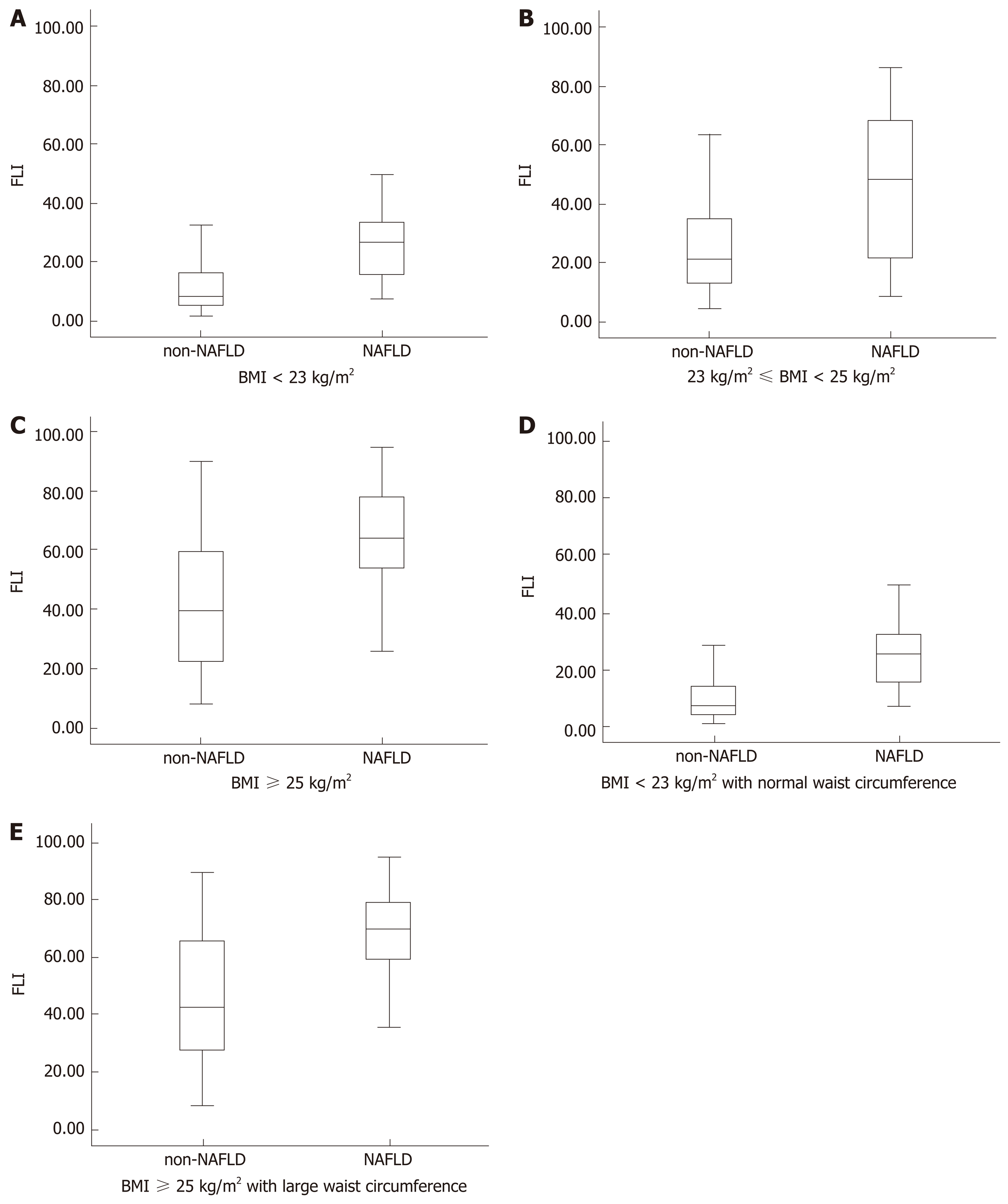Copyright
©The Author(s) 2020.
World J Gastroenterol. Apr 21, 2020; 26(15): 1792-1804
Published online Apr 21, 2020. doi: 10.3748/wjg.v26.i15.1792
Published online Apr 21, 2020. doi: 10.3748/wjg.v26.i15.1792
Figure 3 Fatty liver index in different groups divided by various parameters including body mass index, waist circumference, and the diagnosis of non-alcoholic fatty liver disease.
A: Fatty liver index (FLI) of non-alcoholic fatty liver disease (NAFLD) and non-NAFLD groups in the population with a body mass index (BMI) < 23 kg/m2; B: FLI of non-NAFLD and NAFLD groups in the population with a BMI ≥ 23 kg/m2 but < 25 kg/m2; C: FLI of non-NAFLD and NAFLD groups in the population with a BMI ≥ 25 kg/m2; D: FLI of non-NAFLD and NAFLD groups in the population with a BMI < 23 kg/m2 with a normal waist circumference; E: FLI of non-NAFLD and NAFLD groups in the population with a BMI ≥ 25 kg/m2 with a large waist circumference. FLI: Fatty liver index; BMI: Body mass index; NAFLD: Non-alcoholic fatty liver disease.
- Citation: Zeng J, Yang RX, Sun C, Pan Q, Zhang RN, Chen GY, Hu Y, Fan JG. Prevalence, clinical characteristics, risk factors, and indicators for lean Chinese adults with nonalcoholic fatty liver disease. World J Gastroenterol 2020; 26(15): 1792-1804
- URL: https://www.wjgnet.com/1007-9327/full/v26/i15/1792.htm
- DOI: https://dx.doi.org/10.3748/wjg.v26.i15.1792









